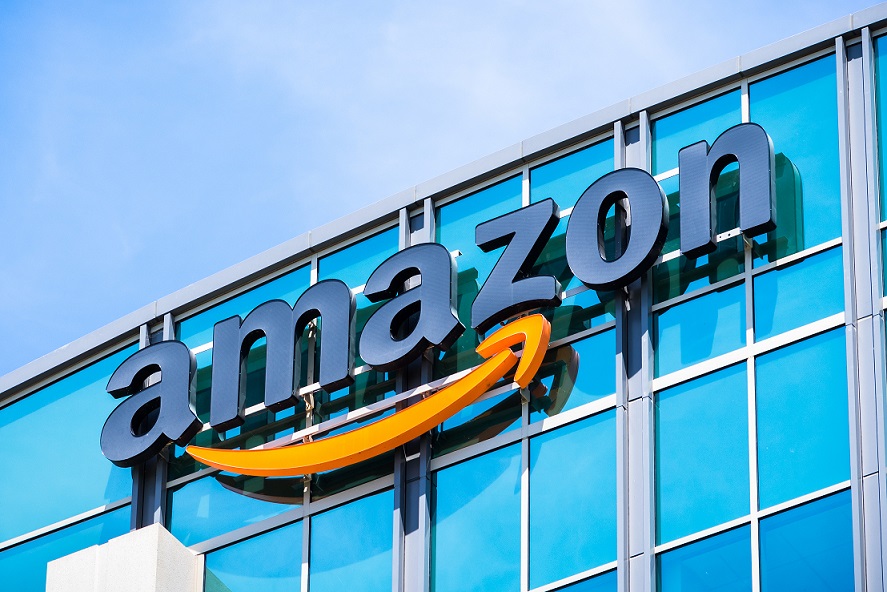Amazon’s HQ2 Expected to Write a New Chapter in the Region’s Economic History
By
Frank Dillow

TUESDAY, NOV. 13 WAS “DAY ONE” FOR AMAZON. After a 14-month search, the company announced Northern Virginia would be the location for one of its two new headquarters – edging out 240 competing locations across the country.
As part of the announcement, Amazon also renamed its new headquarters location as National Landing, which covers Crystal City along with parts of adjoining Pentagon City and Alexandria’s Potomac Yard.
Tucked between Reagan National Airport, the Pentagon and I-395, Amazon’s new headquarters will ultimately occupy 4 million square feet of office space, and possibly as much as 8 million square feet over the next 12 years, according to the company’s announcement. Since 2005, office vacancy rates there have hovered near 20 percent due to the federal government’s decision to relocate many agencies away from the area during its Base Realignment and Closure (BRAC) implementation. Amazon’s leases are expected to drive the vacancy rate in Crystal City to a historically more normal level of 3 to 4 percent.
According to information provided by Amazon, the company anticipates hiring 400 new employees in 2019 – growing to at least 25,000 by 2030. An even bigger impact is expected from Amazon’s expanding presence. New spin-off businesses in Northern Virginia and the D.C. area are predicted to add an additional 62,000 new jobs and $15 billion in economic activity by 2030, according to a study by the Virginia Chamber Foundation released in December.
Immediately affecting commercial real estate activity in the area will be the $195 million in infrastructure investments funded by Virginia and Arlington County, announced by local officials as part of their commitment to attract Amazon. Included in the projects will be construction of improved Metro stops at Crystal City and Potomac Yard, as well as enhancements to Route 1 and construction of an overhead pedestrian walkway connecting Amazon’s site to Reagan National Airport.
Virginia also plans to invest up to $375 million constructing a new Virginia Tech graduate level “Innovation Campus” by 2020 in Oakville Triangle at Alexandria’s Potomac Yard, which is two miles from Amazon’s new headquarters. In addition, the state will provide support for master’s degree programs at George Mason University’s nearby Arlington campus and other educational programs at all levels.
“This announcement is one of the best things that has happened in Alexandria in decades,” Alexandria City Manager Mark Jinks enthused in the Alexandria Gazette on Nov. 22.
“Virginia put together a proposal for Amazon that we believe represents a new model of economic development for the 21st Century,” said Virginia Governor Ralph Northam. “The majority of Virginia’s partnership proposal consists of investments in our education and transportation infrastructure that will bolster the features that make Virginia so attractive: a strong and talented workforce, a stable and competitive business climate and a world-class higher education system.”
Changing its name to National Landing won’t be the first time the area has been renamed. The areas now called Arlington County and the City of Alexandria were originally included in the land given by Virginia to the federal government to create the District of Columbia for the nation’s new capital during President George Washington’s first term. Fifty years later, in 1846, Congress gave the land back to Virginia. It became known as Alexandria County with the courthouse located in the City of Alexandria.
Before World War I, Northern Virginia was among the poorest areas in the state – “a backward agricultural district reflecting poor soil, limited markets and a lagging enterprise,” according to an economic development report entitled “Northern Virginia History” published in 1981 by the Northern Virginia Planning District Commission. The roads were so bad, one farmer’s wife complained that her eggs would all break before she could get them to market.
As Washington, D.C. began to grow and expand across the Potomac River, more cars resulted in the construction of better roads and a trolley line was extended into Fairfax County. Cows began to replace horses as the most valuable farm animals, and the area became noted for its many dairy farms. In 1920, its name was changed from Alexandria to Arlington County.
More had changed than just its name. As housing developments began to squeeze out family farms, neighborhoods emerged throughout Arlington County, including Crystal City, which was named after a popular hotel called the Crystal Inn, featuring a large crystal chandelier in its lobby.
By 1940, with the increased military buildup for World War II and the Great Depression slipping into the past, National Airport was built on reclaimed mudflats and landfill of the Potomac River. When it opened in 1941, critics viewed it as “an overbuilt white elephant that would never be used,” but Northern Virginia’s growth had moved into high gear.
In Arlington County, the old pawnshops, wholesale fish markets, railroad yards and trolley stops gave way to clusters of office buildings. Crystal City became identified with its heavy dependence on high-rise office and apartment buildings that began to emerge in the early 1960s, the report explained.
One of the major long-term benefits of the Amazon selection, the Chamber report predicts, may be in putting those older office towers and high-rise apartments and their newer counterparts to good use in attracting non- government related corporations.
Since the announcement, developers have filed with Arlington County for approvals to build an 18-story building at 400 11th Street South, which is currently a parking lot and equipment storage building for Verizon. The proposed new building would include 285 residential units sitting atop 12,194 square feet of retail with underground parking for 114 vehicles.
While the anticipated growth from Amazon’s decision will undoubtedly bring more challenges to the already scarce single-family home market, it will also deliver a long-awaited stimulus to the commercial markets for multifamily residences, increased office construction and greater retail activity.